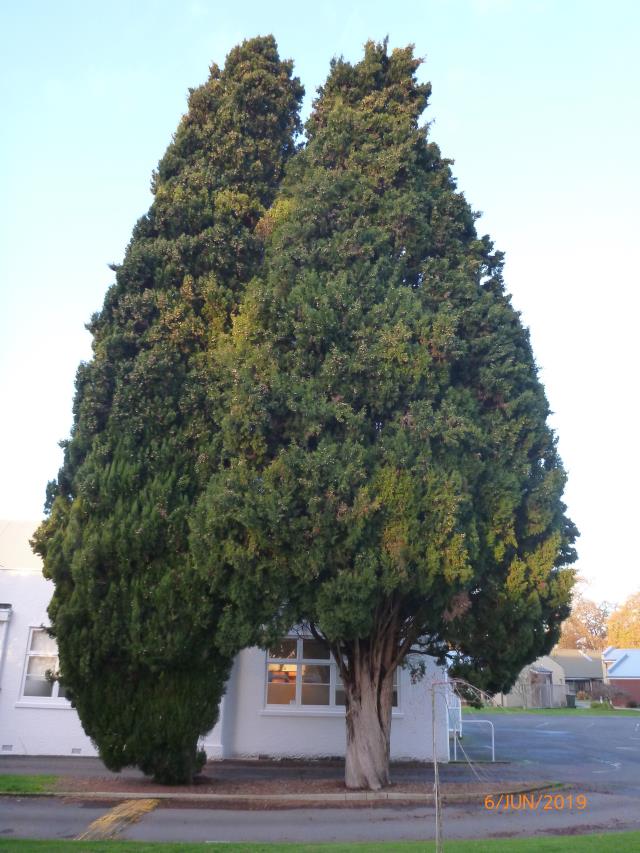
Mediterranean cypress (Cupressus sempivirens)
These two trees stand in the grounds of St Andrews Church. The seeds were brought back from the Garden of Gethsemane in 1956 by Basil and Cynthia Hewett, and raised at McWhannells nursery before being planted at St Andrews. It is thought that this fastigiate variety of cypress (stricta) was an ornamental Roman cultivar of the original spreading variety (horizontalis). Popular throughout the Mediterranean, its tall columnar form punctuates the landscape of southern France, Tuscany, Greece and the Middle East and parts of North Africa. The ancient Egyptians used the resinous wood to make sarcophagi and insect-proof chests.
The cypress tree gives its name to the island of Cyprus, where it is native. The copper mines on this island were vital to the Romans for making bronze. They called copper the ‘metal from Cyprus’ or aes Cyprium, which then became cyprum or cuprum, the source of the chemical symbol Cu which is used today.
The tree is named after Cyparissus, a mythical figure who accidentally slew Apollo’s favourite stag. Full of remorse (and probably scared stiff), he begged that his grief would last forever, whereupon Apollo turned him into a cypress tree, whose resinous sap is said to represent his tears. The cypress thus became the symbol of the Underworld, eternal death and the immortal soul, and is still widely planted in cemeteries, including that of Cambridge.
(source: Around the World in 80 Trees by Jonathon Drori)

